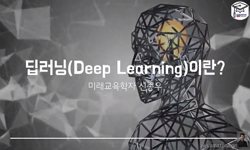기존 건축물의 경우 오랜 기간이 지남에 따라 도면이 누락되거나, 설계 변경 혹은 리모델링 등으로 인하여 도면과 일치하지 않는 경우가 존재한다. 도면이 존재하지 않거나 도면과 불일치된...
http://chineseinput.net/에서 pinyin(병음)방식으로 중국어를 변환할 수 있습니다.
변환된 중국어를 복사하여 사용하시면 됩니다.
- 中文 을 입력하시려면 zhongwen을 입력하시고 space를누르시면됩니다.
- 北京 을 입력하시려면 beijing을 입력하시고 space를 누르시면 됩니다.
딥러닝 기반 Scan-to-BIM 프로세스 자동화 방법 = Method of Automating Scan-to-BIM Process based on Deep Learning
한글로보기https://www.riss.kr/link?id=T15771391
- 저자
-
발행사항
서울 : 세종대학교 대학원, 2021
- 학위논문사항
-
발행연도
2021
-
작성언어
한국어
-
주제어
Scan-to-BIM ; 자동화 ; 딥러닝 ; 공간관계 ; 파라메트릭 알고리즘 ; Dynamo
-
DDC
006.31 판사항(22)
-
발행국(도시)
서울
-
형태사항
49p. : 삽도 ; 26cm
-
일반주기명
세종대학교 논문은 저작권에 의해 보호받습니다.
Method of Automating Scan-to-BIM Process based on Deep Learning
지도교수:이재욱
참고문헌: p.43~47 -
UCI식별코드
I804:11042-200000367018
- 소장기관
-
0
상세조회 -
0
다운로드
부가정보
국문 초록 (Abstract)
기존 건축물의 경우 오랜 기간이 지남에 따라 도면이 누락되거나, 설계 변경 혹은 리모델링 등으로 인하여 도면과 일치하지 않는 경우가 존재한다. 도면이 존재하지 않거나 도면과 불일치된 건축물의 현재 현황을 반영한 도면을 제작하기 위하여 역설계(Reverse Engineering)가 활용된다. 역설계를 통하여 제작된 도면은 건축물의 유지관리 및 보수, 현황 파악 등에 필요한 정보를 제공할 수 있다. 하지만 역설계 과정은 현장 실측, 도면 작업 등의 전문적인 기술이 요구되며 많은 비용과 시간이 소모된다.
역설계 과정의 한계를 극복하기 위하여, 레이저 스캐닝으로 생성된 포인트 클라우드 데이터를 바탕으로 BIM 모델을 생성하는 Scan-to-BIM 기술이 적용되고 있다. 하지만 일반적인 Scan-to-BIM 과정 또한 스캐닝, 데이터 처리, 모델링 등에 수작업이 요구되며 이로 인한 시간, 비용이 소모된다. 이러한 수작업으로 인한 자원의 소모를 줄이기 위하여, Scan-to-BIM 과정을 자동화하기 위한 연구가 활발히 수행되고 있다. 하지만 부분적인 자동화는 시도되고 있으나 포인트 클라우드로부터 BIM 모델을 생성하는 전체 과정을 자동화한 연구는 미흡한 상황이다. 또한 기존 연구는 벽, 바닥, 천장 등과 같은 주요 객체에만 한정하여 모델링을 자동화하였다. 실제로 사용 중인 건축물에는 주요 객체뿐만 아니라 설비, 가구 등 다양한 객체가 존재한다. 실내 대피 동선 탐색, 화재 시뮬레이션, 에너지 관리 등에는 건축물을 구성하는 주요 객체뿐만 아니라, 건축물 내에 존재하는 모든 객체를 고려해야 한다.
이에 본 연구는 딥러닝(Deep learning) 알고리즘을 기반으로 포인트 클라우드로부터 건축물 내부에 존재하는 다양한 객체들의 데이터를 추출하여 BIM 모델을 생성하는 전체 Scan-to-BIM 과정을 자동화하는 방법을 제안한다. 이 방법은 딥러닝 기반 semantic segmentation을 통하여 추출되는 객체 클래스를 13개로 증가시키고, 객체 간 공간 관계를 정의함으로써 포인트 클라우드로부터 추출한 경계상자의 정확도를 향상시킨다. 또한 Dynamo의 파라메트릭 알고리즘을 적용하여 경계상자로부터 추출한 객체 데이터와 BIM 라이브러리를 매칭함으로써 BIM 모델을 자동적으로 생성한다. 케이스 스터디로서 사무실의 포인트 클라우드 데이터를 대상으로 개발된 방법을 적용한 결과, 일부 객체 클래스의 BIM 생성에서 최대 53.33%의 정확도 향상을 확인하였다. 이를 통해, 기존 건축물의 현실 캡처(reality capture)를 위한 Scan-to-BIM의 자동화 가능성을 검증하였다.
다국어 초록 (Multilingual Abstract)
There are cases with existing buildings where drawings are omitted based on the passing of time, or may not match the drawings due to design modifications or remodeling. Reverse engineering is used to produce drawings that reflect the current state of...
There are cases with existing buildings where drawings are omitted based on the passing of time, or may not match the drawings due to design modifications or remodeling. Reverse engineering is used to produce drawings that reflect the current state of buildings that are inconsistent with their drawings or those that do not drawings. Drawings that are prepared through reverse engineering can provide the necessary information for maintenance and management, repairs, and status identification. However, the reverse engineering process requires specialized skills such as on-site measurements and drawing preparations, as well as a large amount of money and time.
In order to overcome the limitations of the reverse engineering process, a Scan-to-BIM technology capable of generating a BIM model based on point cloud data produced by laser scanning is being applied. However, the Scan-to-BIM process also requires manual work, including scanning, data processing, and modeling, which consumes both time and money. In order to reduce the consumption of such resources due to the necessity of manual work, research into the automation of the Scan-to-BIM process is being actively conducted. Although partial automation is being attempted, there is insufficient research into automating the entire process of generating the BIM model from the point cloud. Furthermore, existing research has automated modeling limited only to key components, such as walls, floors, and ceilings. However, in addition to the key components in buildings, there are various components, including but not restricted to equipment and furniture. To find suitable indoor evacuation routes, simulate fire situations, and manage energy consumption, all existing components in the building, including the key components of the building, must be considered.
Thus, this study proposes a method of automating the entire Scan-to-BIM process of generating a BIM model by extracting the data of various components existing within buildings from point cloud based on a deep-learning algorithm. This particular method increases the component class extracted through deep-learning-based semantic segmentation to 13 classes, and enhances the accuracy of the bounding box extracted from point cloud by defining the spatial relationship between the components. Furthermore, the BIM model is automatically generated by matching the BIM library with the component data extracted from the bounding box by applying a parametric algorithm of Dynamo. Upon applying the method developed for the point cloud data of the office as a case study, an increase in accuracy of up to 53.33% was displayed in the BIM generation in some component classes. Through which, the possibility of Scan-to-BIM automation for reality capture of existing buildings becomes possible.
목차 (Table of Contents)
- 제1장 서론 1
- 1.1 연구 배경 1
- 1.2 연구 목적 2
- 1.3 연구 방법 및 범위 5
- 제1장 서론 1
- 1.1 연구 배경 1
- 1.2 연구 목적 2
- 1.3 연구 방법 및 범위 5
- 제2장 선행연구 분석 및 고찰 7
- 2.1 3차원 객체분류 7
- 2.2 BIM 모델 생성 11
- 2.3 기존 연구 고찰 및 접근 13
- 제3장 Scan-to-BIM 자동화 방안 15
- 3.1 객체 인식 자동화 15
- 3.1.1 Semantic segmentation 15
- 3.1.2 군집화(Clustering) 16
- 3.2 BIM 객체 데이터 추출 자동화 19
- 3.2.1 경계상자(Bounding Box) 생성 19
- 3.2.2 공간관계 적용 21
- 3.3 BIM 모델링 자동화 24
- 3.3.1 표준 객체 24
- 3.3.2 파라메트릭 알고리즘 기반 BIM 객체 생성 26
- 제4장 Case study를 통한 유효성 검증 28
- 4.1 PointNet을 활용한 semantic segmentation 검증 28
- 4.2 Python 기반 경계상자 생성 알고리즘 검증 31
- 4.3 Dynamo 기반 BIM 모델 생성 검증 34
- 제5장 BIM 모델의 생성 정확도 검증 38
- 제6장 결론 41
- 참고문헌 43
- ABSTRACT 48












